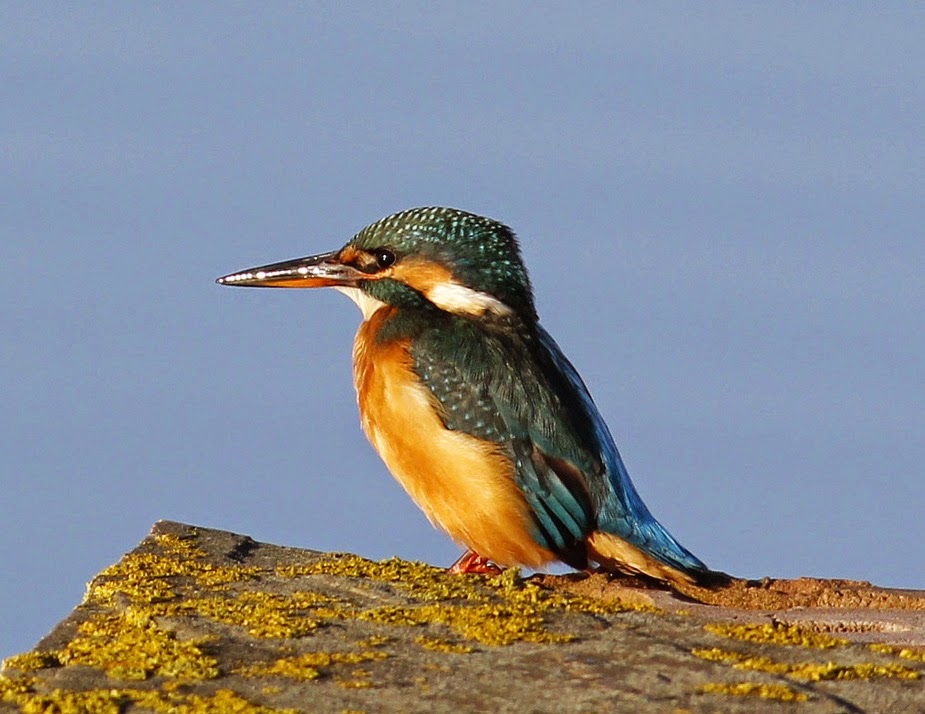The weather folk say next week will be better. In the meantime Friday was yet another windy morning with intermittent showers, far from perfect conditions which posed the question of where to go for best.
I decided to give Pilling a shot in the hope that the poor weather had dropped in a few Wheatears to catch. In the event I saw only one at Fluke Hall in a spot that didn’t lend itself to leaving a trap. There were none at a favoured catching spot near Pilling Water where the tally is 17 ringed for the year.
There was a Buzzard in the trees at Pilling Water where the crows gave the game away as they chased the Buzzard off in the direction of Fluke Hall. Despite the rain of late the wildfowlers’ pools are almost completely waterless after the dry summer so all I could find was a Grey Heron and the nearest thing to wildfowl a stranded duck decoy left over from last winter.
On heading back to Fluke Hall I saw 3 Buzzards above the wood, a patrolling Kestrel and a lonely Chiffchaff moving west along the sea wall by virtue of the well-spaced bushes.
Buzzard
There was a Great-spotted Woodpecker calling from high in the trees but by now I’d decided to head to Knott End and the incoming tide.
Ravens are something of a local scarcity but with a status of increased sightings and odd breeding records in recent years, this in flat Lancashire farmland as opposed to mountainous areas where the Raven traditionally breeds.
Despite this recent influx the species remains extremely shy and is unlikely to be seen at close quarters, the usual sightings hereabouts consisting of birds high overhead as they give out their distinctive, deep, resonant cronking calls.
So it was rather surprising and something of a mystery to find 2 Ravens again in the car park at Knott End, hanging out on the perimeter wall, perhaps for bread and fish & chip hand-outs from the punters in their cars, just as the gulls do.
Lesser Black-backed Gull
Both Ravens appeared to be juvenile birds but from their demeanour, worn plumage and general dishevelled appearance I suspect they may have been in recent captivity, perhaps as pets which outgrew their novelty value?
Raven
From Wiki - “In recent years, biologists have recognized that birds engage in play. Juvenile Ravens are among the most playful of bird species. They have been observed to slide down snowbanks, apparently purely for fun. They even engage in games with other species, such as playing catch-me-if-you-can with wolves, otters and dogs. Ravens are known for spectacular aerobatic displays, such as flying in loops or interlocking talons with each other in flight. They are also one of only a few wild animals who make their own toys. They have been observed breaking off twigs to play with socially”
A walk up Windy River produced a Wheatear struggling against the wind to stay upright, 6 “Alba” wagtails, 3 Redshank and 150+ Oystercatcher and most of the waders by now at the roost with still two hours to go.
Wheatear
On or about the tideline, 1 windblown juvenile Common Scoter, 40+ Dunlin, 5 Grey Plover, 5 Turnstone, 3 Sanderling, 1 Grey Heron and 45+ Sandwich Tern.
It became very windy and very wet so I called it a day until tomorrow.
Linking today to Anni's Birding Blog, Camera Critters and Eileen's Saturday Blog.
Linking today to Anni's Birding Blog, Camera Critters and Eileen's Saturday Blog.

































































.jpg)













